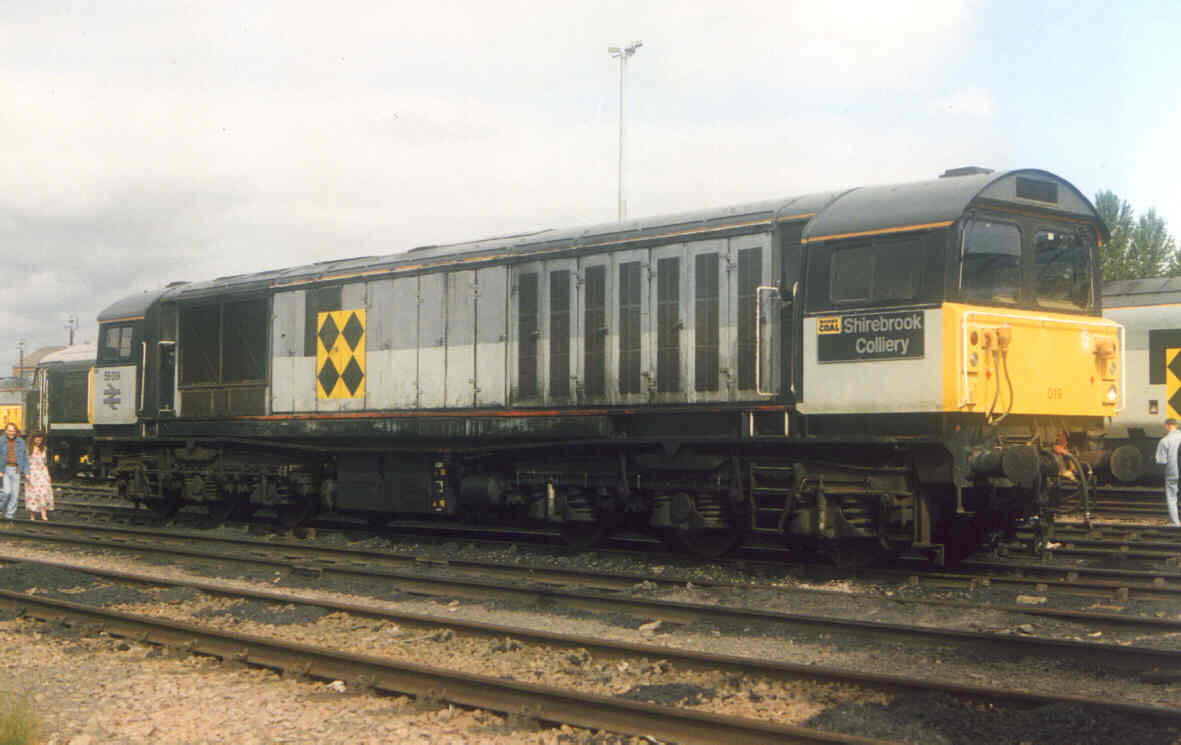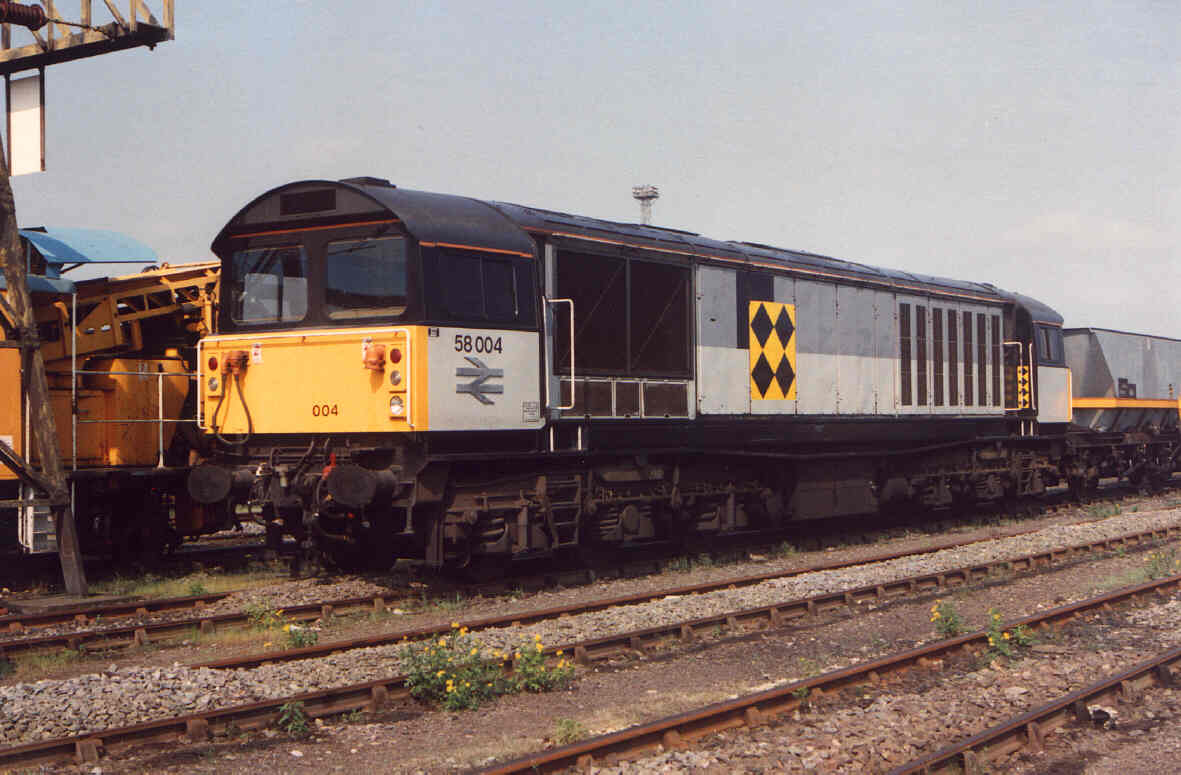
Built : 1982-1987 by BREL at Doncaster
Weight : 130t
Fuel Capacity : 4214 litres
Maximum speed : 80mph
Train brakes : Air
Train supply : Not equipped
Route availability : 7
Multiple working : Red Diamond system
Number range: 58001-58050
First copped : Derby Railway Technical Centre, June 1984.
Haulage by : 58021 and 58050
Favourite livery : Railfreight Coal
Favourite locomotive : 58020
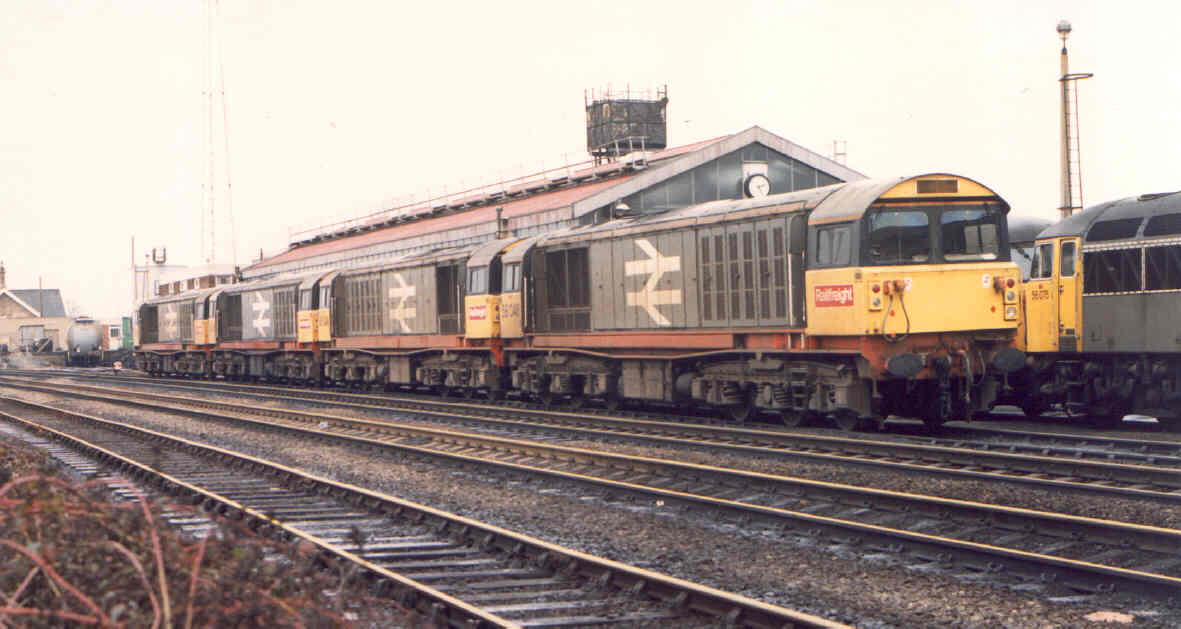
The first time I saw a "Bone" or "Eggtimer" as they are sometimes known, was on a sunny day in June 1984. The family were travelling by train to Bournemouth. As our Derby Bound DMU passed the RTC, you couldn't fail to be impressed by the large new yellow and grey loco sat in the sidings. 58001 was resting up from its testing for the weekend. From that day, I always found the locos very impressive looking.
58001 was unveiled at Doncaster Works on December 9th 1982. The loco, together with its sisters, was designed for all freight duties, but built primarily to haul Merry Go Round (MGR) Coal trains. From new, the locos carried Slow Speed Control. This device enabled the locos to creep around coal loading facilities and power stations at less than 1 mile per hour. The also received air train brakes, and no heating equipment.
The first batch of 58001-58009 entered service on 6th February 1984. They were all allocated to Toton, allowing BR to base their servicing at one depot. The locos were ideal for MGR trains all over the East Midlands, travelling from colliery to power station, and back again in a roundabout traffic flow, hence the term "Merry Go Round". They travelled into Yorkshire and down as far as Didcot on these flows. Speedlink and Freightliner duties were the order of the day for the 58s during the 1984 miners' strikes.
The Class 58s were the first to be fitted with the standard BR cab layout which is now used on the Class 59, 60 and 66 locomotives. The class were well liked by drivers and maintenance staff alike. The body side doors were removable giving easy access to the power units and the alternator, unlike other classes, where access to the engine rooms was internally from the cabs. To me, this made the locos very special, in as much as no other loco class could be maintained so easily. It also gave rise to the BR Arrow symbol being scrambled during the days of the original livery, since the doors were not always replaced in the correct order!
The Class 60 locomotives, which were built at Brush, Loughborough, a few years later, featured SEPEX equipment. 58050 was used for testing separately excited traction motors and was eventually converted back to a standard Class 58 entering service in March 1988.
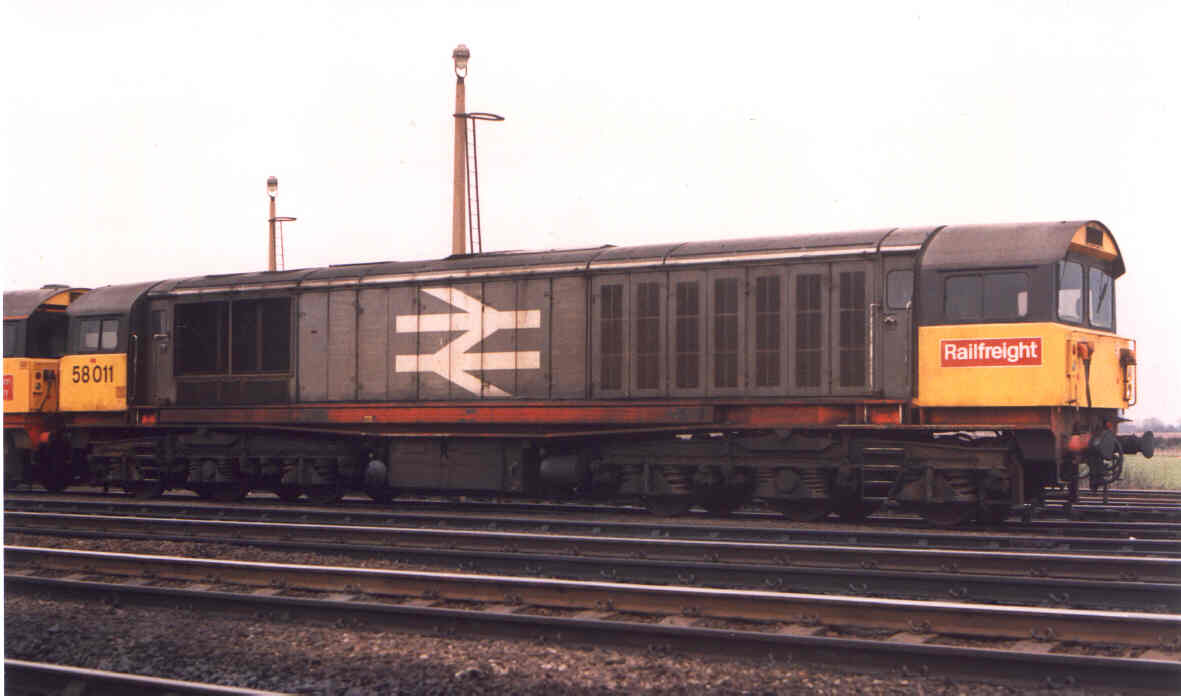
The first livery carried was the then new Railfreight grey with yellow cabs and a red solebar. The livery was very striking and suited the locos well. Some of the later ones had metal "Railfreight" plates fitted to the cab sides or fronts.
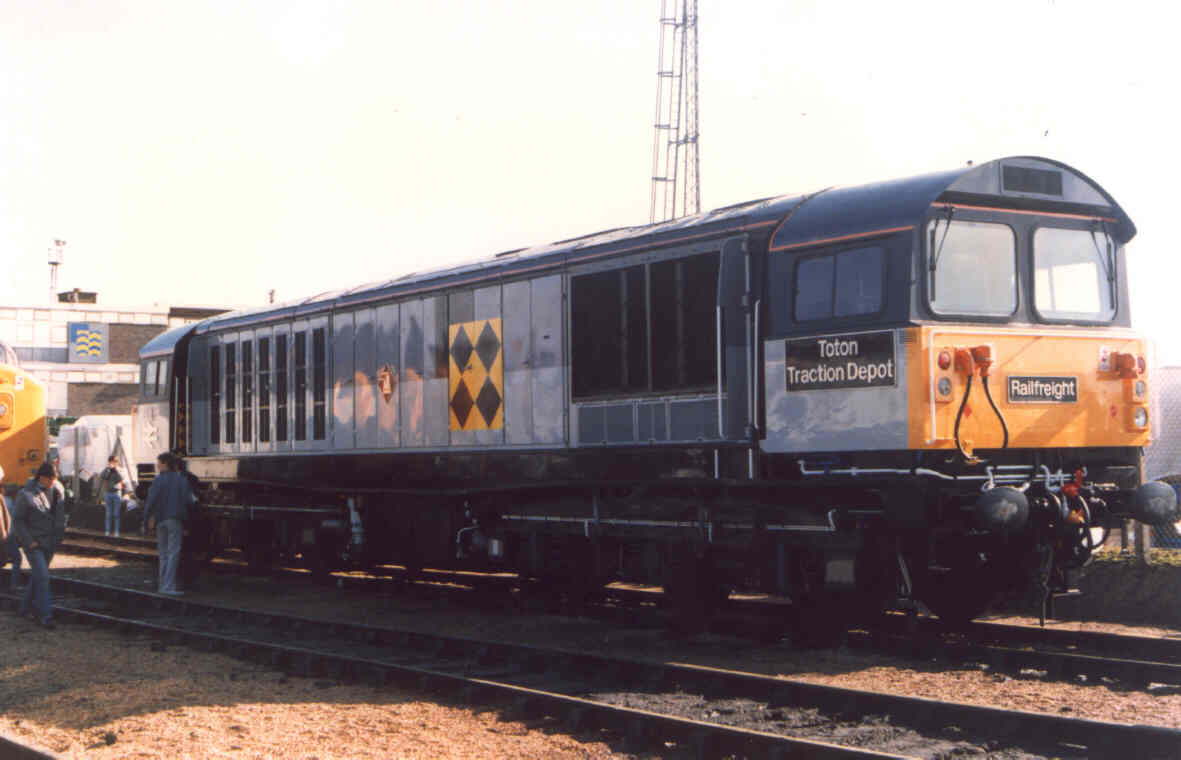
When BR was split into sectors in 1987, the entire fleet became the property of Railfreight Coal. In my opinion, this was the locos' finest colour scheme. 58050 was unveiled in the new Trainload livery with Coal logos at Ripple Lane Open Day on 15th October 1987. 58049 was the last to be painted into the new Trainload livery during December 1991.
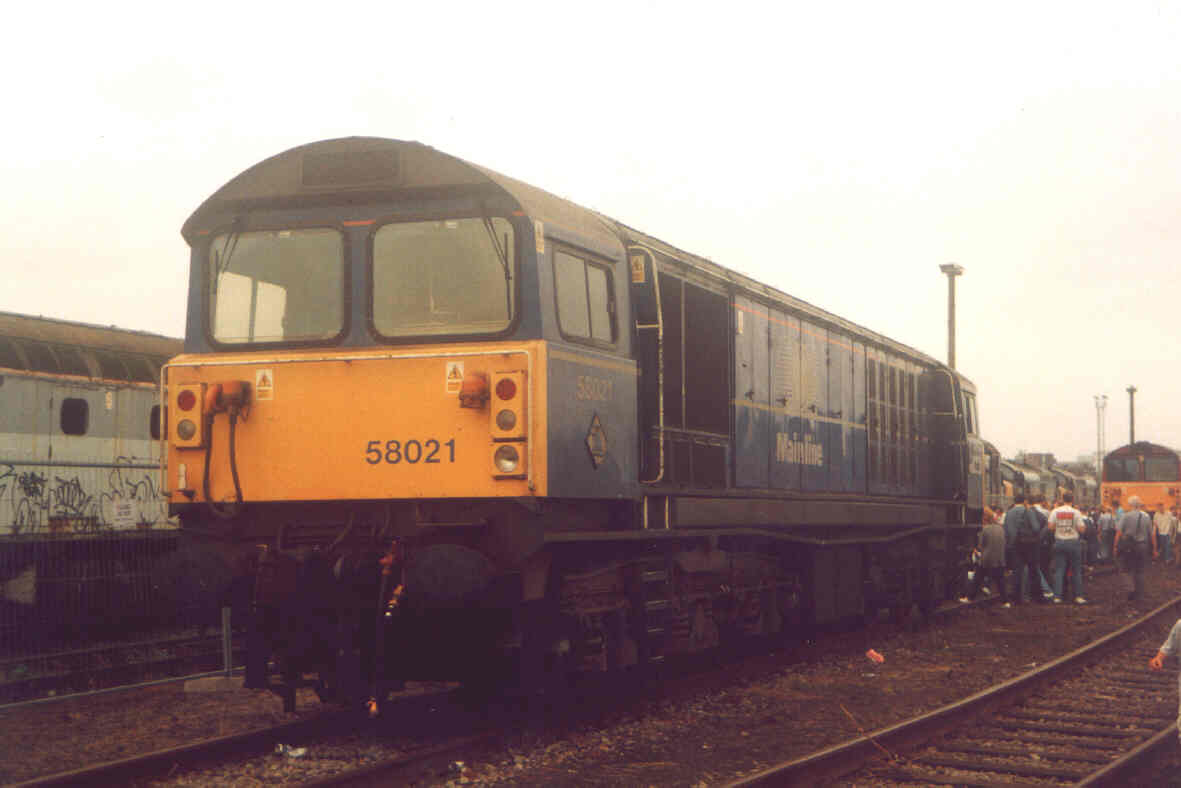

Railfreight was eventually split into three shadow companies prior to full privatisation of the railways. These companies were Transrail and LoadHaul who liked the Class 56 and Class 60. However, Mainline preferred the 58s to the 56s, and the entire fleet became property of Mainline. Some were repainted into the full Mainline Aircraft Blue livery with silver logos, while others had their Coal insignia removed and replaced with a blue insignia, retaining their grey colours. When Mainline inherited the locos, not only did they pull coal trains, they also migrated onto numerous other train loads, including Petroleum and Freightliner trains.

English Welsh and Scottish Railways accepted the 58s into their fleet, painting some of them into their attractive maroon and gold livery. However, the locos were not to last too long in EWS ownership. They were all withdrawn by December 2002. EWS has no plans to replace the Class 58s. They prefer the Canadian built Class 66. There is nothing physically wrong with the fleet, yet they have fallen from favour. A crying shame. Spanish and Dutch railways are interested in hiring in the locos, and indeed 58041 and 58043 have now gone to work in Spain.
At their peak, MGR workings from Toton and those outbased at Worksop, took the 58s to Drakelow, Ratcliffe, High Marnham, Cottam and West Burton power stations with coal being brought from Denby, Bentinck, Welbeck, Thoresby, Asfordby, Calverton, Cotgrave, Gedling, Bilsthorpe and Clipstone pits, as well as several in Yorkshire. 58s were also used on aggregates trains from the East Midlands to Diss, March, Barham, Kennet, Norwich, Acton, Bedford, Radlett, Stevenage and Cambridge. They could also be found on the Avon Binliner service.
The sentimental part of me still hopes that EWS will have a change of heart regarding the 58s. With 58041 and 58043 overseas, and 58050 already claimed by the National Railway Museum, there are still 47 superb locos, just requiring oil and water top ups, a recharge of the batteries and a warm up. They are still capable of hauling any freight throughout the country, and I hope they make a reappearance soon. Last year, I visited Eastleigh depot, and the sight of a dozen 58s dumped round the back of the depot was a sad sight indeed.
For much of their lives, the 58s earned their corn in unremarkable circumstances. Sometimes they would be called upon to drag a failed HST or electric where there was no current. They were also a popular choice for railtours and charter services. But usually, you'd find them at the head of a train of HAAs, going efficiently about their business. The railway is a poorer place without them.
